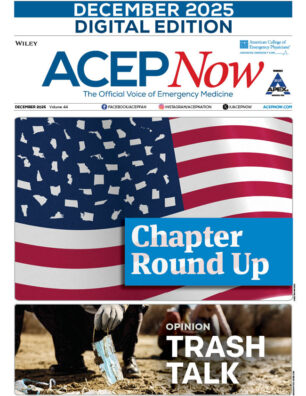NEW YORK (Reuters Health) – Hospital readmission rates appear to be falling since passage of the Medicare Hospital Readmissions Reduction Program (HRRP), according to an analysis of more than 15 million Medicare patients.
“To me, it was really remarkable that hospital readmission rates decreased so quickly after the passage of health reform in 2010,” Dr. Jason H. Wasfy from Massachusetts General Hospital in Boston told Reuters Health by email. “Hospital readmission rates had been disclosed publically before then, and penalties weren’t actually assessed until 2012.”
“But what really seemed to drive improvement in avoiding readmissions for patients seemed to be passage of the Affordable Care Act, at which time hospitals would have known that penalties were coming,” he said. “The prospect of financial penalties appears to matter more than simply public disclosure.”
Dr. Wasfy’s team used data from the Medicare Provider Analysis and Review files to evaluate risk-standardized readmission rates from 2000 to 2013 overall and for acute myocardial infarction (AMI), congestive heart failure (CHF), and pneumonia and investigated whether readmission rates improved differently between lowest-performing hospitals and higher-performing hospitals.
Readmissions increased by an estimated 0.5 per 10,000 discharges per year before passage of the law and decreased by 76.6 per 10,000 discharges per year after passage of the law. Readmission rates decreased to a greater extent among the lowest-performing hospitals (by 92.4 per 10,000 discharges per year) than among the highest-performing hospitals (by 69.0 per 10,000 discharges per year), according to the December 27th Annals of Internal Medicine report.
For all three conditions – AMI, CHF, and pneumonia – readmissions decreased after passage of the law, and the number of averted readmissions was larger among lower-performance hospitals than among higher-performance hospitals.
“Hospital readmissions really do seem to be preventable,” Dr. Wasfy said. “There has been a lot of debate about this in the past. But the fact that health care providers and hospitals appear to have prevented them underscores that some of them, at least, are preventable.”
“I think the timing and rate of decline in readmissions suggest that financial incentives for hospitals may work better than public disclosure alone in driving quality improvement,” he said. “Hospitals appear to have responded to the prospect of financial incentives. Furthermore, the hospitals facing the biggest penalties improved the most.”
Dr. Gregg C. Fonarow from Ronald Reagan-UCLA Medical Center in Los Angeles, who recently examined readmission rates for heart failure under the HRRP, told Reuters Health by email, “It is surprising despite the emphasis that CMS placed on the hospital 30-day rehospitalization reporting and financial penalties, how modest the reductions in readmission were, with less than 1 in 100 readmissions being averted.”
“It is unclear whether the reductions seen represent improved care quality or instead gaming by hospitals, such as delaying readmissions just beyond 30 days or merely reclassifying a readmission from inpatient status to outpatient observation status,” he said. “Most critically, this study did not evaluate whether there were unintended consequences of increased mortality or worse health status as a result of the CMS penalty program.”
“Further studies are needed to determine the impact of the readmission penalties and whether they should be replaced with more patient-centered and meaningful measures,” Dr. Fonarow said.
Dr. Michael Pat Thompson from University of Tennessee Health Science Center in Memphis recently questioned the reliability of the 30-day readmission measures used in the HRRP. He told Reuters Health by email, “The success of the HRRP, as demonstrated in this report, ensures that reducing readmissions will continue to be a policy objective. But, more generally, I think the success of the HRRP solidifies pay-for-performance as a method that will be used by policymakers to stimulatequality improvement in hospitals.”
“Despite the successes of the HRRP, the long-term effects of financial penalties on hospitals, and the patients they serve, remains to be seen,” he said. “We should be particularly concerned about the combined financial impact of multiple penalties and the fact that relative quality targets results in persistent penalties for many hospitals.This is particularly concerning forsafety-net hospitals, who have been disproportionately penalized by the HRRP.”
“Additionally,” Dr. Thompson said, “understanding exactly how hospitals are reducing readmissions, including where patients may be going instead of readmitting and whether changes in healthcare delivery are better for patients, are critically important when evaluating the overall impact of the HRRP.”
Dr. David L. Chin from University of California, Davis’s Center for Healthcare Policy and Research in Sacramento told Reuters Health by email, “The HRRP appears to influence 30-day readmission rates after adjusting for patient and hospital characteristics, particularly among lower-performing facilities. However, the sustainability of this policy’s effect is unknown.”
Pages: 1 2 | Multi-Page





No Responses to “U.S. Hospital Readmissions Reduction Program Appears to Work”